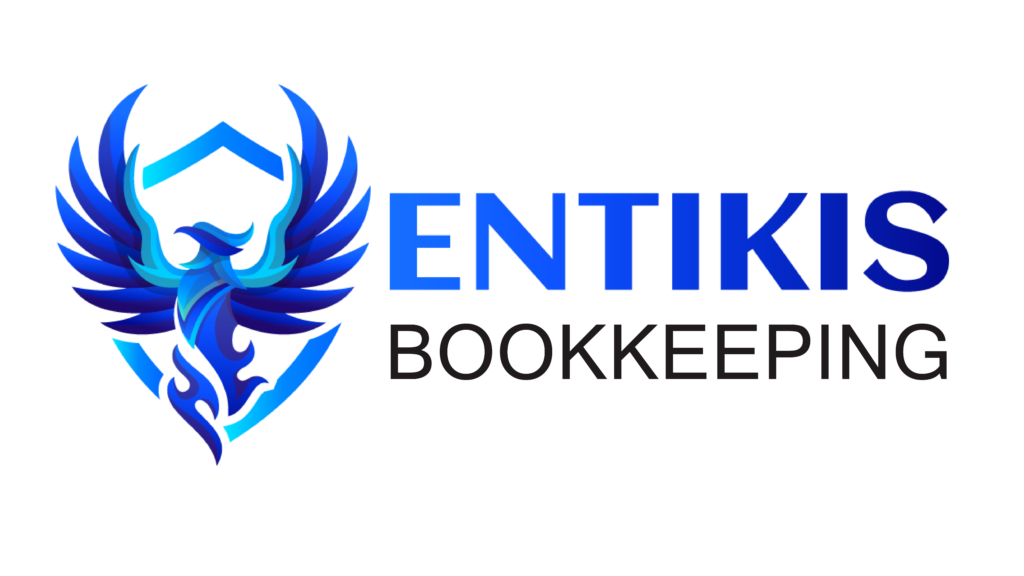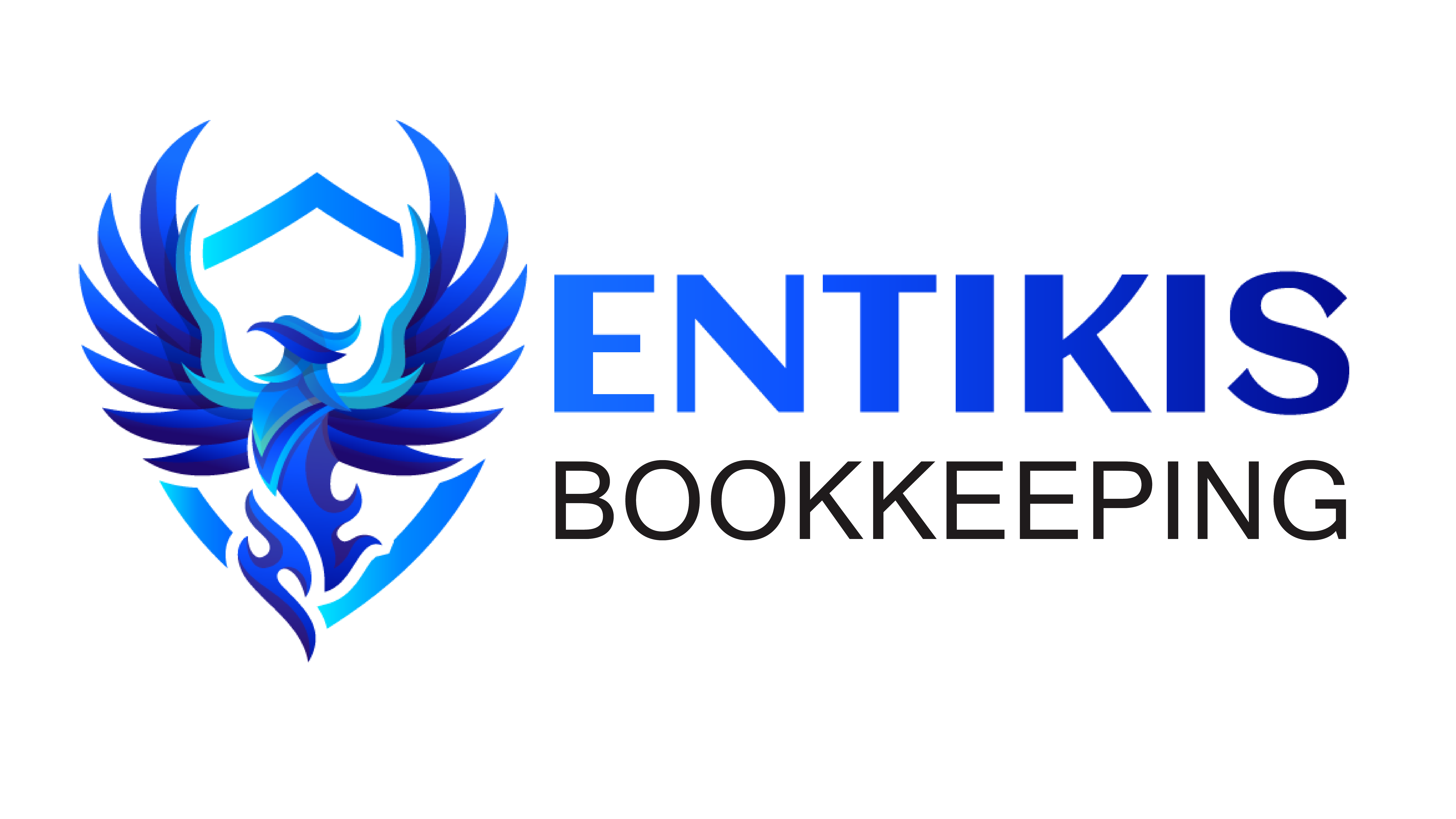
Business Valuation: Methods and Techniques
In the realm of finance and commerce, determining the value of a business is fundamental for various purposes, such as mergers and acquisitions, capital raising, financial reporting, and strategic planning. Business valuation is a nuanced process that requires a comprehensive analysis of multiple factors to arrive at a fair and accurate assessment of a company’s worth. At Entikis Bookkeeping, we specialize in providing meticulous financial services, including business valuation, to empower businesses with the insights they need to make informed decisions and thrive in competitive markets.
Understanding Business Valuation:
it is a multifaceted process that entails assessing the economic worth of a business or company. It involves a comprehensive analysis of various factors, including but not limited to, the company’s assets, liabilities, cash flows, growth potential, market conditions, and industry trends. The primary purpose of business valuation is to determine the fair market value of the business, which serves as a crucial reference point for stakeholders such as owners, investors, creditors, and potential buyers.
One of the key aspects of business valuation is understanding the different approaches and methods used to determine the value of a business. These approaches can be broadly categorized into three main types: asset-based approach, income approach, and market approach.
The asset-based approach involves assessing the value of a business based on its tangible and intangible assets. Tangible assets include physical properties such as real estate, equipment, and inventory, while intangible assets encompass intellectual property, brand value, goodwill, and customer relationships. In this approach, the value of the business is calculated by subtracting its liabilities from the total value of its assets. While the asset-based approach provides a foundation for valuing certain types of businesses, it may not fully capture the value of intangible assets or future earnings potential.
The income approach focuses on the future cash flows generated by the business and discounts them to their present value using an appropriate discount rate. This approach relies on the principle that the value of a business is determined by its ability to generate income over time. Common methods under the income approach include the discounted cash flow (DCF) method, which estimates the present value of future cash flows, and the capitalization of earnings method, which calculates the value based on a multiple of the company’s earnings. The income approach is particularly useful for valuing businesses with stable cash flows and predictable earnings patterns.
The market approach involves comparing the business to similar companies that have been recently sold or are publicly traded. This approach relies on market data and comparable transactions to assess the value of the business relative to its peers. Common methods under the market approach include the guideline public company method, which compares the business to publicly traded companies in the same industry, and the guideline transaction method, which analyzes recent mergers and acquisitions in the industry. The market approach provides valuable insights into the relative value of the business within its industry and market environment.
In addition to these approaches, business valuation often involves a combination of methods to arrive at a comprehensive valuation estimate. This approach allows for a more holistic assessment of the business, taking into account its unique characteristics, industry dynamics, and market conditions. The valuation process may also involve qualitative factors such as management quality, competitive positioning, industry trends, and macroeconomic factors, which can impact the business’s future performance and value.
Business valuation serves several critical purposes for stakeholders. For business owners, it provides a basis for strategic decision-making, including determining the selling price of the business, evaluating investment opportunities, planning for growth, and assessing the overall financial health of the company. For investors and creditors, business valuation helps assess the risk and return potential of their investments, inform lending decisions, and evaluate the financial strength and viability of the business. For potential buyers, business valuation guides acquisition decisions, helps negotiate favorable terms, and assesses the value proposition of the target company.
Overall, business valuation is a complex and dynamic process that requires careful analysis, judgment, and expertise. It serves as an essential tool for stakeholders to understand the value of a business, make informed decisions, and navigate the complexities of the business landscape effectively. Whether for strategic planning, investment analysis, or transactional purposes, business valuation plays a crucial role in driving value creation, managing risks, and achieving financial objectives in today’s competitive business environment.
Methods of Business Valuation:
Various methods are employed to value a business, each offering unique insights and considerations. Here, we delve deeper into the primary methods:
-
Asset-Based Approach: The asset-based approach determines the value of a business by evaluating its tangible and intangible assets minus its liabilities. This method provides a foundation for valuation, especially for asset-intensive businesses. Within this approach, there are two main methodologies:
-
Book Value Method: This approach calculates the value of a business based on its historical cost of assets, as recorded on the balance sheet, adjusted for accumulated depreciation. While straightforward, it may not reflect the true market value of assets.
-
Adjusted Net Asset Method: This method adjusts the book value of assets to their fair market value, considering factors like market trends, economic conditions, and technological advancements. It provides a more realistic assessment of asset worth.
-
-
Market-Based Approach: The market-based approach determines the value of a business by comparing it to similar businesses that have been sold recently. This method relies on market data and valuation multiples derived from comparable transactions. Common multiples include the price-to-earnings (P/E) ratio, price-to-sales (P/S) ratio, and enterprise value-to-EBITDA ratio.
-
Income-Based Approach: The income-based approach determines the value of a business based on its expected future earnings or cash flows. It assesses the company’s ability to generate profits over time and discounts these earnings to present value. Two primary methodologies are employed:
-
Discounted Cash Flow (DCF) Method: This method estimates the present value of a business by discounting its projected future cash flows at a predetermined rate, accounting for the time value of money and investment risk.
-
Capitalization of Earnings Method: This method calculates the value of a business based on its expected future earnings and a capitalization rate, representing the return investors demand on their investment.
-
Techniques for Business Valuation:
Business valuation is a critical aspect of financial analysis that enables stakeholders to assess the worth of a business entity. Whether for strategic planning, mergers and acquisitions, investment decisions, or financial reporting, understanding the techniques used for business valuation is essential. There are several widely recognized techniques employed by valuation professionals to determine the value of a business. These techniques can be broadly categorized into three main approaches: the asset-based approach, the income approach, and the market approach.
- Asset-Based Approach: The asset-based approach focuses on determining the value of a business by assessing its tangible and intangible assets. Tangible assets include physical properties such as real estate, equipment, and inventory, while intangible assets comprise intellectual property, brand value, goodwill, and customer relationships. The asset-based approach can be further divided into two methods: the going concern method and the liquidation method.
-
Going Concern Method: This method values the business as an ongoing concern, assuming that it will continue operating indefinitely. The value of the business is calculated by subtracting its liabilities from the total value of its assets. The going concern method is commonly used for businesses with stable operations and positive cash flows.
-
Liquidation Method: In contrast to the going concern method, the liquidation method values the business based on the assumption that it will cease operations and its assets will be sold off. The value of the business is determined by subtracting its liabilities from the estimated liquidation value of its assets. This method is typically used for distressed businesses or those facing insolvency.
- Income Approach: The income approach focuses on estimating the present value of the future cash flows generated by the business. This approach relies on the principle that the value of a business is determined by its ability to generate income over time. The income approach can be implemented through various methods, including the discounted cash flow (DCF) method and the capitalization of earnings method.
-
Discounted Cash Flow (DCF) Method: The DCF method estimates the present value of all future cash flows generated by the business, discounted at an appropriate discount rate. The discount rate reflects the risk associated with the business and the time value of money. The DCF method is widely used for valuing businesses with predictable cash flows and growth potential.
-
Capitalization of Earnings Method: The capitalization of earnings method calculates the value of the business based on a multiple of its earnings. The earnings are capitalized using an appropriate capitalization rate, which reflects the risk and return expectations of investors. This method is commonly used for valuing stable businesses with consistent earnings.
- Market Approach: The market approach involves comparing the business to similar companies that have been recently sold or are publicly traded. This approach relies on market data and comparable transactions to assess the value of the business relative to its peers. The market approach can be implemented through methods such as the guideline public company method and the guideline transaction method.
-
Guideline Public Company Method: The guideline public company method compares the business to publicly traded companies in the same industry. Key financial metrics such as price-to-earnings ratio, price-to-sales ratio, and enterprise value-to-EBITDA ratio are used to determine the valuation multiples. The valuation multiples derived from comparable public companies are then applied to the financial metrics of the subject business to estimate its value.
-
Guideline Transaction Method: The guideline transaction method analyzes recent mergers and acquisitions in the industry to determine the value of the business. Similar to the guideline public company method, valuation multiples derived from comparable transactions are applied to the financial metrics of the subject business to estimate its value. This method provides insights into the relative value of the business within its industry and market environment.
In addition to these primary approaches, business valuation may also incorporate other techniques and considerations, such as industry-specific factors, economic conditions, competitive positioning, management quality, and strategic outlook. The choice of valuation method depends on various factors, including the nature of the business, its growth prospects, the availability of data, and the preferences of stakeholders. Valuation professionals often employ a combination of methods to arrive at a comprehensive valuation estimate, taking into account the unique characteristics and circumstances of the business.
It’s important to note that business valuation is both an art and a science, requiring expertise, judgment, and careful analysis. While the techniques described above provide a framework for valuing businesses, the process can be complex and subjective, and there may be inherent uncertainties and risks involved. As such, engaging qualified valuation professionals with specialized knowledge and experience is crucial to obtaining reliable and meaningful valuation results.
In conclusion, understanding the techniques used for business valuation is essential for stakeholders to make informed decisions and assess the value of their investments. Whether for strategic planning, investment analysis, or transactional purposes, business valuation plays a vital role in guiding decision-making, managing risks, and achieving financial objectives. By employing appropriate valuation methods and considering relevant factors, stakeholders can gain valuable insights into the value of a business and navigate the complexities of the business landscape effectively.
Significance of Business Valuation:
-
Informed Decision Making: Business valuation provides stakeholders with vital insights to make informed decisions regarding investments, acquisitions, mergers, or divestitures.
-
Strategic Planning: It aids in strategic planning by assessing the current financial health, identifying areas of improvement, and setting realistic goals for future growth.
-
Investor Confidence: Accurate valuation instills confidence among investors, lenders, and shareholders, fostering trust and facilitating capital infusion.
-
Legal Compliance: Valuation is often required for compliance purposes, such as tax assessment, financial reporting, or regulatory requirements.
Methods of Business Valuation:
-
Income Approach: This method evaluates the present value of anticipated future income streams generated by the business. Techniques under this approach include Discounted Cash Flow (DCF) analysis and Capitalization of Earnings.
-
Market Approach: It compares the subject business with similar companies that have been recently sold or are publicly traded. Common methods include Comparable Company Analysis (CCA) and Comparable Transaction Analysis (CTA).
-
Asset-Based Approach: This method assesses the value of a business by summing up its tangible and intangible assets, deducting liabilities. Techniques like the Adjusted Net Asset Method and the Liquidation Value Method fall under this approach.
Key Factors Influencing Business Valuation:
-
Financial Performance: Revenue growth, profitability, and cash flow play a pivotal role in determining the value of a business.
-
Market Conditions: Economic trends, industry dynamics, and market competition significantly impact valuation multiples and marketability.
-
Intellectual Property: Intangible assets such as patents, trademarks, and proprietary technology contribute to the overall value of the business.
-
Management Team: Competent and experienced management teams often enhance the perceived value of a business.
-
Risk Profile: Factors like market volatility, operational risks, and regulatory compliance influence the discount rates applied in valuation models.
In conclusion, business valuation serves as a cornerstone in the corporate landscape, guiding crucial decisions and fostering transparency in transactions. By comprehensively understanding its significance, methods, and key factors, stakeholders can navigate the intricate terrain of business with confidence and clarity. Whether you’re a business owner, investor, or advisor, grasping the essence of business valuation is indispensable for achieving success and sustainable growth in today’s dynamic marketplace.
In addition to the primary methods, several techniques enhance the accuracy and reliability of business valuation:
-
Sensitivity Analysis: Sensitivity analysis evaluates how changes in key assumptions or variables impact the business’s valuation. By testing various scenarios, analysts gain insights into the range of potential values and the factors driving valuation fluctuations.
-
Scenario Analysis: Scenario analysis involves assessing different scenarios or outcomes that may affect the business’s value. By considering various market conditions, operational strategies, and external factors, stakeholders can better understand the risks and opportunities associated with different scenarios.
-
Market Research: Market research provides valuable insights into industry trends, competitive dynamics, and market conditions. By analyzing industry benchmarks, transaction data, and market trends, analysts can contextualize the business’s performance and assess its competitive position.
-
Due Diligence: Due diligence involves a comprehensive review of the business’s financial and operational aspects to validate assumptions and identify potential risks. By conducting thorough due diligence, stakeholders can mitigate risks and ensure the accuracy of valuation estimates.
Conclusion: Business valuation is a multifaceted process that requires a systematic approach and a thorough understanding of various methods and techniques. At Entikis Bookkeeping, we leverage our expertise and resources to provide comprehensive business valuation services tailored to our clients’ needs. Whether you’re planning a strategic acquisition, seeking investment opportunities, or evaluating your business’s worth, our team is committed to delivering accurate and insightful valuation insights to support your decision-making process.
In conclusion, by employing a combination of rigorous analysis, market research, and strategic insights, businesses can gain a comprehensive understanding of their value and position themselves for sustainable growth and success in dynamic market environments.
If You Are Looking For Professional Bookkeeping Services, Please Contact Us At Admin@Entikis.Com And 817-415-1715 To Learn More About How Entikis Bookkeeping Can Support Your Journey To Success! Located At 640 Taylor St Suite , Fort Worth, TX, United States, Texas. We Offer Professional Bookkeeping Services For Businesses In The Burleson, Fort Worth And The Surrounding Tarrant County Metroplex.




